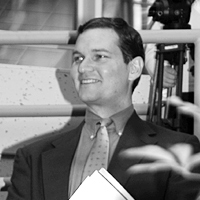| |
 |
| |
Michael Kubzansky '92 |
| |
|
Alumni
Profile: Michael Kubzansky '92
Creative
accounting
Michael
Kubzansky '92 and his World Bank peers turn innovation into
a tool to fight global poverty
by Kari Richardson
In
Turkey, villagers use discarded tire rims to reinforce their
homes against earthquakes. In South Africa, children at play
on a merry-go-round power a pump that provides clean water
and AIDS prevention messages.
And
in rural Mozambique, a Seattle-based nonprofit uses propane-fueled
refrigeration to build a "cold chain" to allow delivery
of critical vaccinations to remote areas.
These
innovative projects and others like them are possible through
grants from Development Marketplace, a World Bank initiative
that is part of the growing wave of support for social entrepreneurship.
Development Marketplace sponsors innovation at the grassroots
level in developing countries around the world through global
and country-level competitions.
Overseeing
the grant-making process, until recently, was Michael Kubzansky
'92, who sums up the job in two words: "unbelievably
fun." Kubzansky has since moved to a new position at
World Bank, the combination bank/development agency charged
with reducing poverty around the world, as special assistant
to the vice president for East Asia and the Pacific.
"The
chance to put money into projects such as these is incredible,"
Kubzansky says during an interview from his Washington, D.C.,
office. "It's immensely inspiring to see creativity at
work in impoverished areas."
What
began in 1998 as a program to encourage innovation among World
Bank staff, in 2000 expanded to include applications from
outside sources including nongovernmental organizations, local
governments — even individuals. The grants, which provide
early-stage capital that allows social entrepreneurs to test
their ideas for a year, also help demonstrate to the development
community that new ideas are ripe for investment, Kubzansky
says.
Development
Marketplace's selection process works much like a business
plan competition. Professionals volunteer to weed through
proposals to find those that are most innovative and likely
to be effective in solving their targeted problem. (For example,
volunteers from the Kellogg
Alumni Club of Washington helped with the December 2003
Global Marketplace Competition.) As the competition narrows,
finalists present their ideas before a live jury.
Grant
amounts typically are small — awards average about $150,000
for global competitions and about $20,000 for national competitions
— but Kubzansky points out that the money goes a long way
in developing countries. The next global competition will
be held May 24-25 in Washington, D.C., in which about 75 finalists
will vie for awards of more than $3 million to support their
environmentally sustainable development ideas.
The
selection process can be grueling, but Kubzansky says a strong
management background is a useful tool for identifying the
proposals most likely to work and the groups best suited to
execute them. Like one of his favorite projects currently
in the development stage — a process to capture dew from
rooftops to provide drinking water in India — Kubzansky
says the best ideas capitalize on existing strengths and don't
require much behavior change from those who are to benefit.
"There's
a tendency to confuse need for demand," Kubzansky says.
"There's this assumption that because there's a need,
everything will take care of itself. Solutions that require
people to change their behavior typically don't work. All
of those marketing classes I took taught me to think about
end-user behavior."
|





